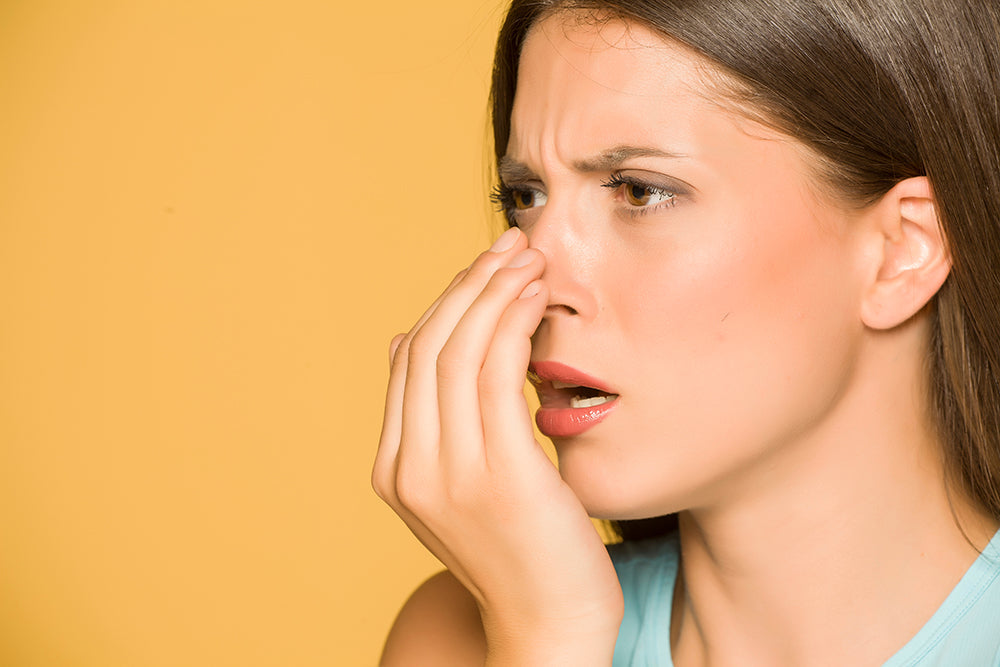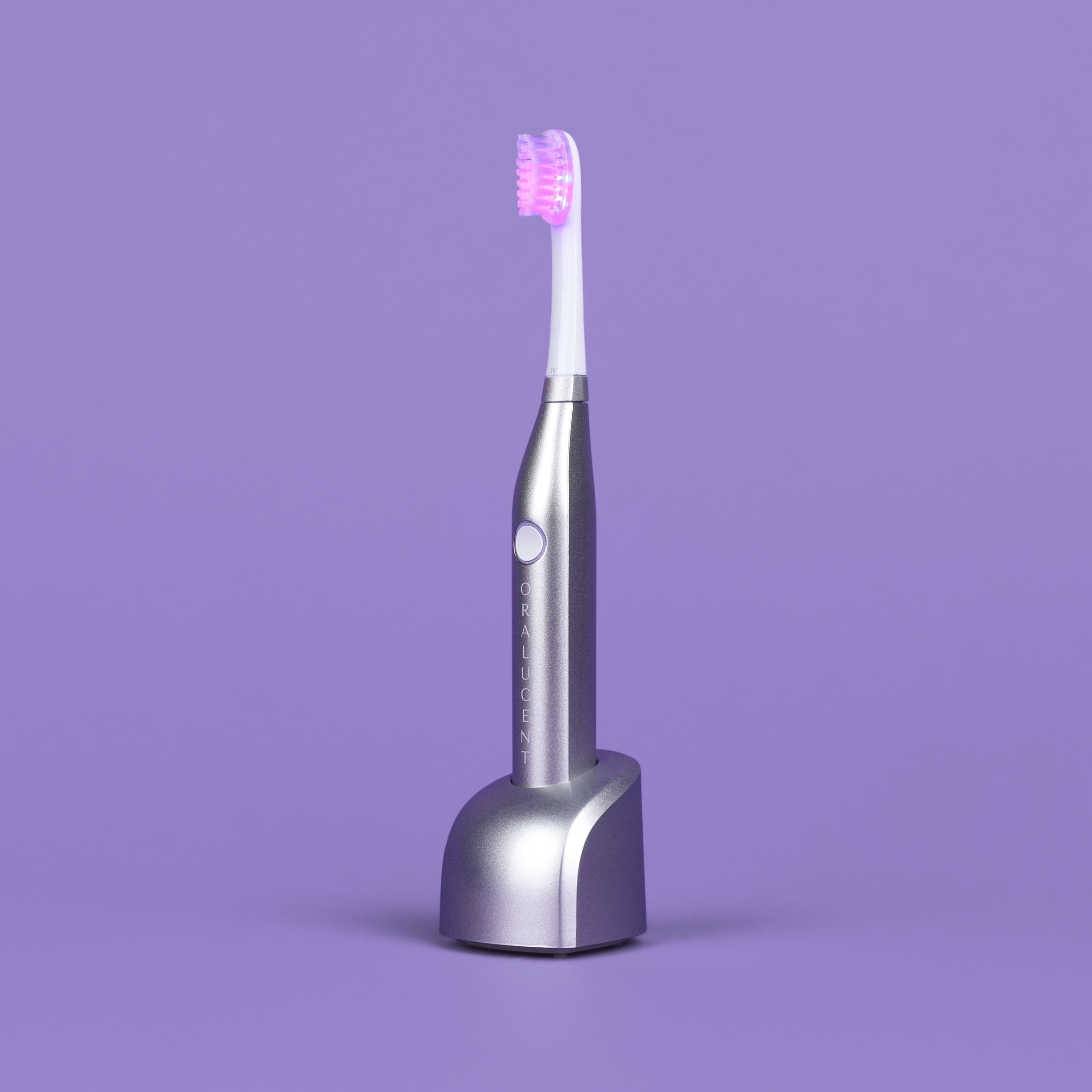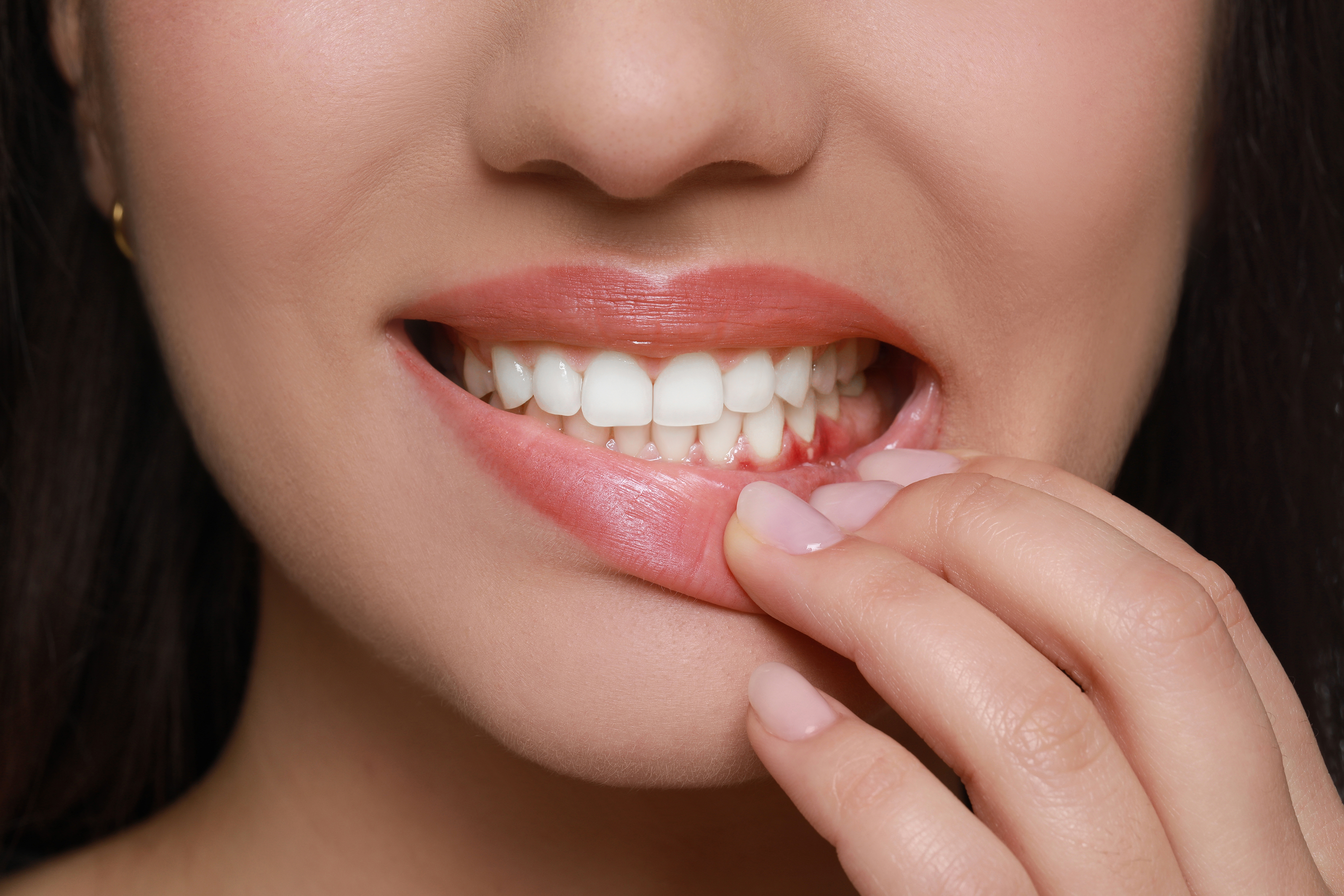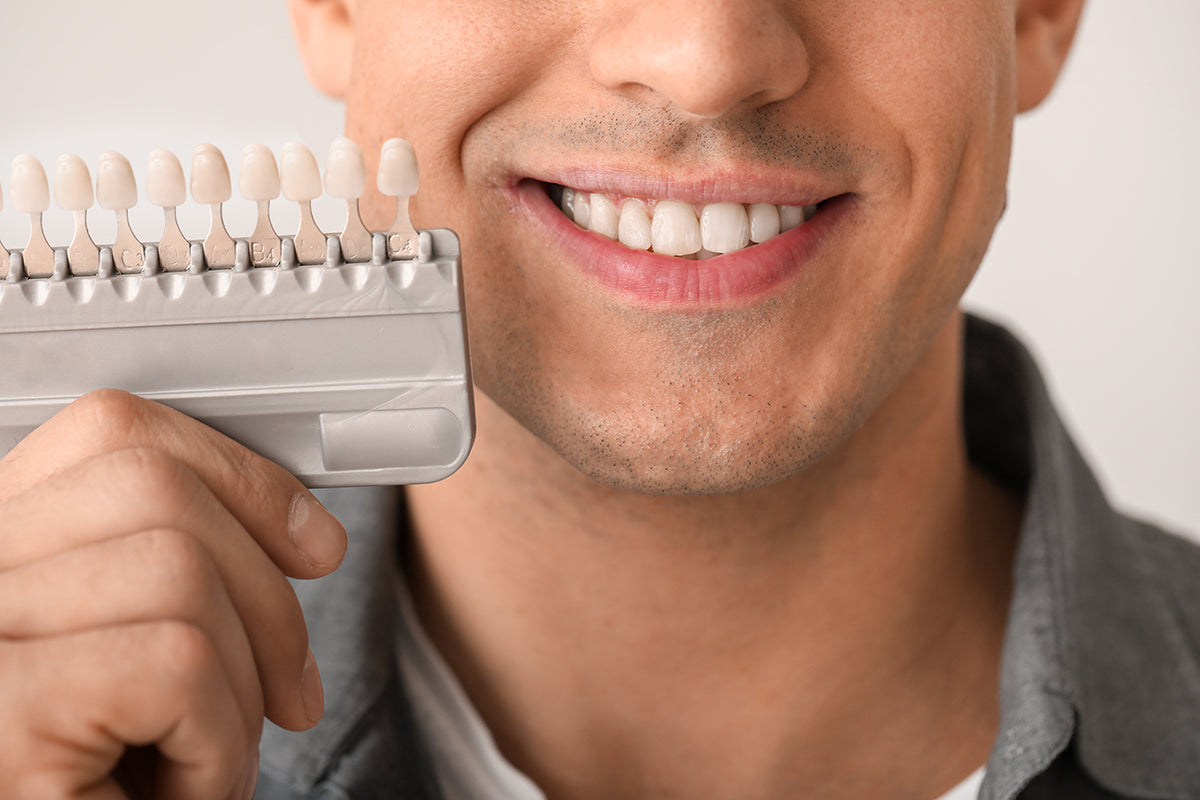What is Bad Breath?
Chronic bad breath odor is usually referred to as “halitosis.” The bad breath problem is most noticeable when you’re talking to other people. Although you might be tempted to mask the bad breath odor with a mouthwash, that’s not always the best thing to do. In fact, many rinses contain alcohol which can dry your mouth out and make bad breath worse as well as wiping out all bacteria (good and bad), which gives opportunistic bacteria the upper hand in repopulating. Rather, you need to be able to target and eliminate the bad bacteria so that there’s not an opportunity for them to continue harboring odors inside of your mouth.
Sadly, most people aren’t able to tell how bad their breath really is. Having a conversation about your bad breath can be difficult, even if it’s with your dentist. Fortunately, it’s something they understand and can help with. In most situations, chronic halitosis is because of specific types of bacteria that are inside of your mouth.
What are the Most Common Reasons for Bad Breath?
There are a lot of bad breath reasons/causes to rule out on your way to combating it. Here are some of the most common sources of bad breath odor:
- Xerostomia (dry mouth)
- Volatile sulfur compounds (VSCs)
- Periodontal disease
- Tobacco use
- Chronic sinus infections
- Diabetes
- Gastrointestinal problems or reflux
- Ketosis
- Removable appliances (dentures, partials, etc.)
Your daily oral routine has a lot to do with treating bad breath. Yes, you can prevent bad breath (in most cases) with the right tools, but if you have bad breath after thorough brushing and flossing, there’s likely a bigger issue that needs your attention. Namely an infection down inside of your gums or an underlying medical issue.
Which Bacteria Cause it?
Your mouth is full of different types of good and bad bacteria. When biofilm become imbalanced or you eat a diet that produces a higher level of sulfur compounds(eggs, brussel sprouts, etc.) you can develop halitosis. Depending on the type of bacterial strain it is, they can be located anywhere from the surface of your tongue to the deep gum pockets around your teeth (some of the most common include P. gingivalis, P. intermedia, F. nucleatum, and others.)
Reducing the undesirable bacteria allows the beneficial bacteria to thrive, fostering a balanced microbiome.
Can Oralucent Light Therapy Toothbrush Help Combat Bad Breath?
Fortunately, Oralucent provides a safe and effective way to kill off harmful bacteria by using advanced light technology. As the light emits special diodes, both plaque levels and infections like gingivitis improve. Oralucent selectively destroys the specific bacteria that produce volatile sulfur compounds, or VSCs. VSCs are considered the root cause of bad breath, so using Oralucent can help eliminate the very source of the problem, instead of masking it temporarily with mouthwash, chewing gums and sprays.
Oralucent’s therapeutic blue and red light therapy makes it easier for you to target the common causes of bad breath right at their source. And since you use it at least twice a day, it helps limit new bacterial colonies from developing and leading to additional bad breath from tongue film or biofilm along the gumlines (a sign of gum disease). Oralucent’s light-activated antimicrobial treatments neutralize sulfur compounds and the odors they produce. As a result, you don’t just enjoy fresher breath, you also get to have a healthier and stronger smile.
What Health Problems are Associated with Bad Breath?
If you have relatively clean teeth but still get bad breath in the morning or throughout the day — and you know you’re not eating the foods that cause bad breath — it’s time to sit back and look at a few specific medical conditions.
If you’re diabetic or on a special diet, you might notice increased bad breath. Bad breath and specific diets and diabetes often go hand in hand, because of how closely related your overall wellness is to your oral health.
For individuals who constantly battle chronic nasal allergies, sinus infections, or have a known GI condition like reflux, it’s normal to expect bad breath. Dry mouth (xerostomia) can make it worse, and unfortunately, it’s a common side-effect of the medications that people take to manage those conditions. If improved oral care and excellent hygiene don’t help and your dentist rules out any dental related causes, you might need to speak with your general practitioner to get screened for a potential medical diagnosis.
The Most Common Ways to Reduce Bad Breath
The best bad breath remedy is prevention. And how do we know how to prevent bad breath? By eliminating sulfur compounds and plaque biofilm from your teeth and gums. Usually, this involves physical removal with a toothbrush and floss. But for people with chronic halitosis, there are specific things you should be sure you’re doing:
- See your dentist and hygienist at least every six months for a professional cleaning
- Make sure your floss reaches down under the gums, against your teeth
- Brush for at least two minutes at a time, twice per day
- Use Oralucent and benefit from the advanced light therapy without changing your brushing routine.
- Use a tongue scraper to remove food debris and sulfur compounds (a large percentage of bad breath bacteria reside on the tongue)
- Combat xerostomia by drinking plenty of water
- Avoid high carb foods and sugars (including artificial sweeteners) which fuel more bacterial growth
- Chew gum with xylitol, to prevent biofilm accumulation in your mouth
When you want to know how to get rid of bad breath, the best question to ask is how to prevent it.
What are the Advantages of Using Oralucent to Combat Bad Breath?
Some people develop more plaque biofilm than the rest of us. Or if you battle medical conditions that cause bad breath, prevention may be more challenging. Thankfully, incorporating minor changes into your oral hygiene routine can give you the effective bad breath help you’re looking for. Thanks to the proven power of blue light technology, you can take your oral hygiene routine to the next level, going to the root cause of bad breath - the bacteria that are causing it. The science behind Oralucent’s success is antimicrobial photodynamic therapy, which is a process that uses a specific type of light to selectively target the bacteria with more potent odors.
How does it work? The therapeutic red and blue light delivered through the toothbrush head travels into tight spaces, between the teeth and even under the gum line, delivering more benefits than traditional toothbrushes. Numerous scientific studies show that certain wavelengths of blue light actually inhibit the growth of plaque biofilm responsible for causing gum disease and reduces the pathogenic bacteria associated with other common dental problems, including bad breath. Red light has been shown to increase circulation, stimulate cell renewal, reduce inflammation and promote healing the body. For people who have always struggled with bad breath, gum infections and other oral maladies, the modest investment in a new toothbrush could be the crucial step in preventing halitosis, gum recession, and tooth loss.
Attacking Your Bad Breath at its Source
Since bacteria account for such a large percentage of the bad breath odors inside of your mouth, finding an oral hygiene tool that kills the “bad” bacteria without harming the good ones can help you cure halitosis. Brushing and flossing are the first place to start. By using Oralucent which harnesses the combined power blue and red light technology into your daily oral hygiene plan, you’ll get to enjoy better results (and fresher breath) than people who simply mask the odors with other products.
Oralucent puts the power of professional microbial oral care in your hands. A whole new level of clean and bright.
References
- Bad Breath Research (July, 1996) – Dental Association Fact File on Bad Breath. -- Mel Rosenberg, PhD
- WMDS, Inc. (August, 2019). The Real (Simple) cure for Halitosis. – Dr. Paul Cotner
- Medical Daily: Bad Breath Causes and How to Cure Them (2019, April) – Leian Naduma
- WebMD Medical Reference (June, 2018) Bad Breath Causes, Treatments, and Prevention. -- Alfred D. Wyatt Jr., DMD
Sources
- The relationship between oral malodor and volatile sulfur compound-producing bacteria.
- Adjunctive dental therapy via tooth plaque reduction and gingivitis treatment by blue light-emitting diodes tooth brushing.
- Phototargeting oral black-pigmented bacteria.
- Antimicrobial blue light inactivation of pathogenic microbes: state of the art.
- Translucency of human teeth and dental restorative materials and its clinical relevance.
- Inactivation of Bacterial Pathogens following Exposure to Light from a 405-Nanometer Light-Emitting Diode Array.




